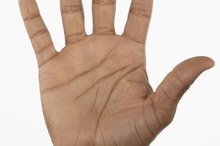The Process of Muscle Relaxation & Contraction
Muscle contraction and relaxation occurs in your body multiple times during the course of a day, especially if you are active. Muscles have fibers, and the fibers are grouped into fascicles, or bundles, which form individual skeletal muscles. There are three states in which muscles exist: contracted, relaxed, or stretched. Your brain and central nervous system have a lot to do with the process of muscles contraction and relaxation.
Central Nervous System
Your central nervous system controls most of the action your body performs on a daily basis. It is your brain communicating with your body, telling your muscles to contract or relax. Without direct connection of nerves, muscles do not contract.
Neurons
The Process of Muscle Relaxation & Contraction
Learn More
Neuron signals are produced in your spinal cord through neurological pathways, and then into the fibers of contracting muscles. There is something called a "motor end plate" in the fibers of your muscles; it is a reactive plasma membrane and its job is to communicate contraction and relaxation.
Muscle Contraction
Muscle fibers contract in response to nerve stimuli from your central nervous system. This is an active process that involves the release of calcium at the cellular level of the muscle fiber, and causes a "ratcheting" effect that results in the shortening, or contracting, of individual muscle fibers.
Muscle Relaxation
Digestive Breakdown of Proteins
Learn More
Once your muscle contracts, the space between the motor end plate and the fibers releases an enzyme called acetylcholinesterase, which ends the stream of action. This causes the muscle to stop contracting and begin relaxation. When relaxation begins, the opposing muscle contracts and pulls the original contracting muscle back into place.
Related Articles
References
Writer Bio
This article was written by the CareerTrend team, copy edited and fact checked through a multi-point auditing system, in efforts to ensure our readers only receive the best information. To submit your questions or ideas, or to simply learn more about CareerTrend, contact us [here](http://careertrend.com/about-us).









